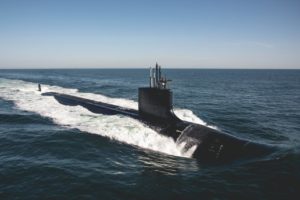
The Navy portion of the House Armed Services Committee’s draft of the fiscal year 2021 defense authorization bill approved Tuesday would add two vessels over the Senate version and argued a second attack submarine is needed to maintain the Columbia-class schedule. The final HASC markup recommends authorizing the first Columbia-class ballistic missile submarine, two Arleigh Burke-class DDG-51 destroyers, one FFG(X) frigate, and two Navajo-class T-ATS towing, salvage, and rescue ships as requested by the administration. However, it also adds a…

 By
By 











